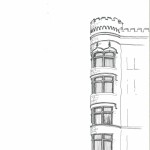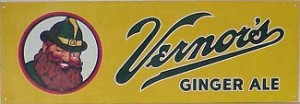
The El Moore is a residential apartment complex that is designed to be a model of urban sustainable living. The El Moore building, which was named the “El Moore Flats” at the time, is a carefully restored structure that was designed by renowned local architect A.C. Varney and built in 1898 by developer Charles W. Moore. During this time period , a type of “Gilded Age” in Detroit, many wealthy industrialists built large ornate homes in what is now the Cass Corridor area, just outside of the downtown district. The first residents moved into the El Moore Flats in 1899.
At the end of the 19th century, and well into the beginning of the 20th century, Detroit experienced an expansive population growth due to the city being a center of manufacturing, with factories and laboratories producing railroad cars, ships, wood burning stoves, steam radiators and boilers, chemicals, and pharmaceuticals.


With the influx of foreign immigrants and migrants from the southern and rural areas of the United States who worked in the factories and especially in the auto plants, “assimilation” and “uniformity” was encouraged by large business owners such as Henry Ford, and the growth and development of individualized and specialized craftsman work was disappearing.

In an effort to counter this trend and also to acknowledge the contributions of many of the European immigrant communities in and around Detroit, the Detroit Society of Arts and Crafts started several initiatives to capitalize on the Arts and Crafts architectural movements popular in England and the United States. Some of the founders of the Detroit Society of Arts and Crafts included George Booth, managing editor of the Detroit News, and internationally renowned Detroit architect Albert Kahn. Another founding member of the Detroit Society was designer William Stratton, who designed many structures in the area around the El Moore and in what is now known as the “Cultural Center” in Detroit: in the Midtown area around Woodward Avenue where many museums, libraries, and art studios are located. William Stratton was married to Mary Chase Perry Stratton, the co-founder of Pewabic Pottery, whose famous custom made and kiln-fired glazed tiles add beauty and value to many historic homes and buildings in and around Detroit.
The Detroit Arts and Crafts Society also founded a school for creative professionals in the early part of the 20th century that is now known as the College for Creative Studies. The original campus, now called the Ford Center, is located on E. Ferry near Woodward Avenue; a 2nd location, called the Tubman Center, is housed in a restored historic building near W. Grand Blvd. in the New Center Area. Both CCS campuses are walking and biking distance from the El Moore.
